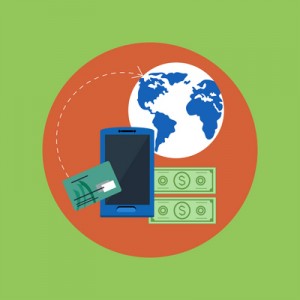 by Jeremy Miller, Technician
by Jeremy Miller, Technician
There are many avenues of attack when banking online safely. Many people simply use a computer that is attached to the Internet with little to no precautions at all. Some bank online even if they know there are issues with their computer or virus infections on their computer.
I will cover three levels of precaution that you can take to ensure your online banking information stays secure: simple, advanced, and paranoid. As the level of precaution increases, it will be more time consuming and difficult but worth it if you want to keep your online banking experience safe and secure.
Simple Precautions
To keep your information secure you must make sure that your computer is fully up-to-date with all Windows Updates and other software patches. Software vendors like Microsoft release security patches regularly to close exposed security holes in their software. Without patching hackers can use known-vulnerabilities to attack your computer.
Next you must make sure that you have anti-virus software installed and it is up-to-date with the latest virus definitions. You must also have your anti-virus run scans regularly to make sure the computer is clean of any known infections.
You should always look in the Uniform Resource Locator (URL) bar to make sure the web address you are accessing is the correct one. Also make sure that the first five characters are HTTPS.
This will ensure that your traffic is encrypted, which will make your entire web traffic look like gibberish. If your first characters are only HTTP and not HTTPS then hackers would be able to read your password in plain text.
Lastly, you must only do online banking from trusted-networks like your home network or in some cases your work network. Anyone else attached to your network has the possibility to access your bank information if they have the know-how.
To be sure you are on a secure network, you should not use online banking from public or free networks that anyone can access. When you do this you ensure that only you and your Internet Service Provider (ISP) can view your online traffic.
This will also protect you from man-in-the-middle attacks (MITM).These attacks are when a hacker is in between you and your target destination usually a router. Hackers using MITM attacks will be able to see all unencrypted traffic.
Advanced Precautions
You must ensure you are implementing all simple precautions, including a few more steps you can take to up your protection level.
Run a full virus scan before accessing your online bank account each time. Your system will be clear of known infections, plus it gives you significantly less risk of an infection since your last scan. A full scan looks at every file on your computer and checks it against a known virus database.
You can also configure Windows Firewall to prompt you before allowing traffic in or out of the computer, or you can install a software-firewall to scan your active Internet traffic.
The firewall will prompt you with pop-ups to ask if specific connections are allowed. This will allow you to approve or deny all traffic on your computer. Usually firewalls have different settings to allow you to choose the level of security this firewall will provide.
Paranoid Precautions
This is the most secure of the three and implements the previous precautions. It would be best to boot to a new operating system every time you need to access your online bank account. You need to know how to change your computers boot order and how to create a bootable USB drive or disk.
There are a number of free operating systems that you can load onto a disk or USB drive. WinPE will allow you to boot into a portable version of Windows. This will be a clean installation with no additional software installed.
You can also use the more widely available bootable Linux distributions as a clean bootable operating system to access your bank information. Ensure you are getting your distribution from a reputable vendor.
Most Linux distributions are free. Downloading a reputable vendor will ensure that there isn’t malicious software pre-loaded into the operating system.
If you are interested in enjoying a safer browser experience you can contact us and we can answer any questions or concerns as well as help you implement any of these precautions.
(Image Source: iCLIPART)
